For those who don’t speak Hoklo (better known as Taiwanese), the local forms of glove puppetry and traditional opera are as inaccessible as they are colorful.
Budaixi (布袋戲, “cloth bag drama”) emerged in Fujian Province around 300 years ago, and was carried to Taiwan by Han migrants. Puppet troupes used to earn money by performing at weddings, funerals and temple celebrations, but in the early 1970s, budaixi made the transition to TV. Yunlin-based Pili International Multimedia continues to mass produce episodes that are broadcast on TV, streamed over the Internet and sold in the form of DVDs.
Taiwanese opera, like Beijing opera, is a performing art in which much of the movement is symbolic, rather than realistic. Those watching need to know that striding purposefully in circles means the character is undertaking a long journey; that wringing one’s hands is an expression of anxiety and that bravery is shown by clasping one’s hands behind one’s back. Rather than reproduce the sound of staff clashing against sword, on-stage combat takes the form of acrobatics accompanied by drums and gongs.
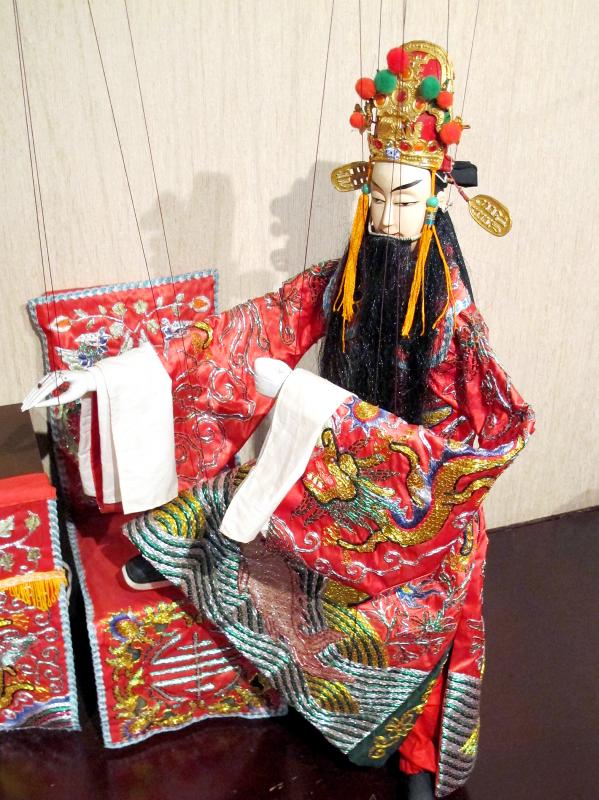
Photo: Steven Crook
Museums dedicated to budaixi and Taiwanese opera exist in Yilan City and Chaozhou Township (潮州) in Pingtung County. Both places can claim to be opera heartlands and puppetry strongholds. At both museums, admission is free.
TAIWAN THEATER MUSEUM
Sharing a building with the Cultural Affairs Bureau of Yilan County Government, Taiwan Theater Museum (臺灣戲劇館) has exhibition galleries on three floors coupled with a substantial amount of information in Chinese and English.
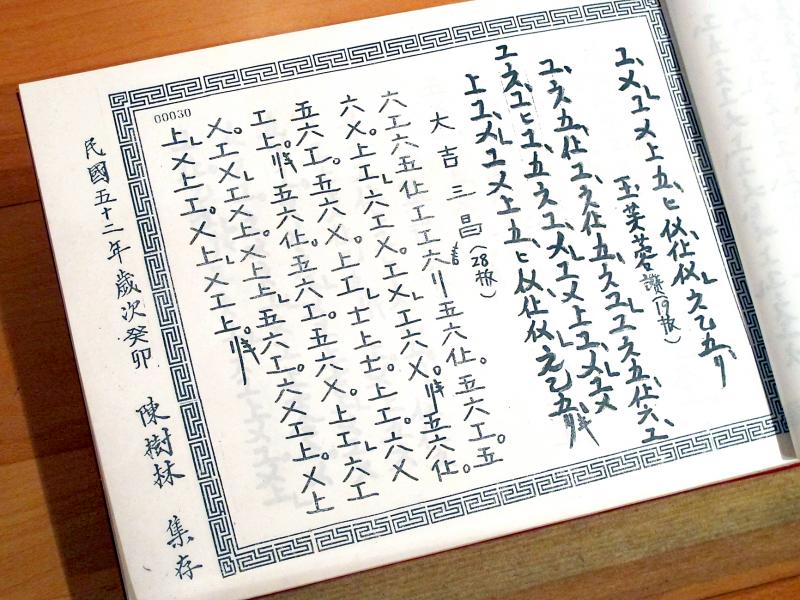
Photo: Steven Crook
Yilan is recognized as the birthplace of Taiwanese opera, which has been described as the country’s only indigenous performing art. Retired opera superstar Yang Li-hua (楊麗花) was born in Yuanshan (員山), the town next to Yilan City. The northeastern county also has rich traditions of string puppetry and glove puppetry.
Among the items displayed on the first floor is a book of traditional sheet music, written in a format utterly different to the scores used by today’s trained musicians.
There’s also an explanation of the differences between the beiguan and nanguan forms of opera. Beiguan mostly uses a pentatonic scale, and scores are considered mere outlines which individual musicians elaborate according to their skills and preferences. Nanguan is older, preserving elements from the Tang Dynasty (618 to 907AD). The two traditions use different combinations of musical instruments.
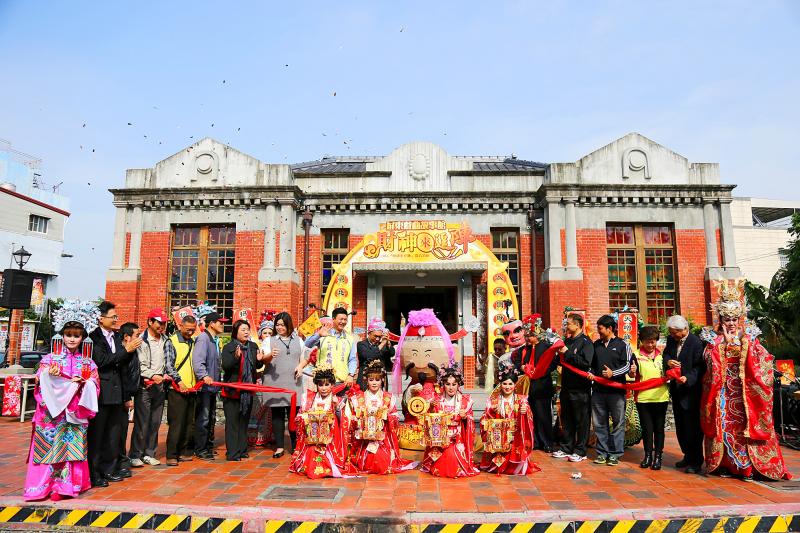
Photo: Chiu Chih-jou
For opera costumes and props, go to the third floor. On weekends, this space is sometimes used by amateur troupes for dress rehearsals. Outsiders are welcome to watch.
The second floor has a beguiling collection of more than 100 string and glove puppets. Some were created for dramas that retell Chinese myths. Others, such as those wearing Taiwanese military uniforms, starred in anti-communist propaganda puppet shows in the 1950s.
Another display on the same floor explains how glove puppets are made. The head is wood, but the face is shaped using resin or clay. The hands, arms, shoulders, and feet are also wood, but glove puppets lack torsos. After clothes have been tailored, the face is painted. If needed, whiskers are glued on. Almost every puppet is given something to hold, such as a sword or a wand.
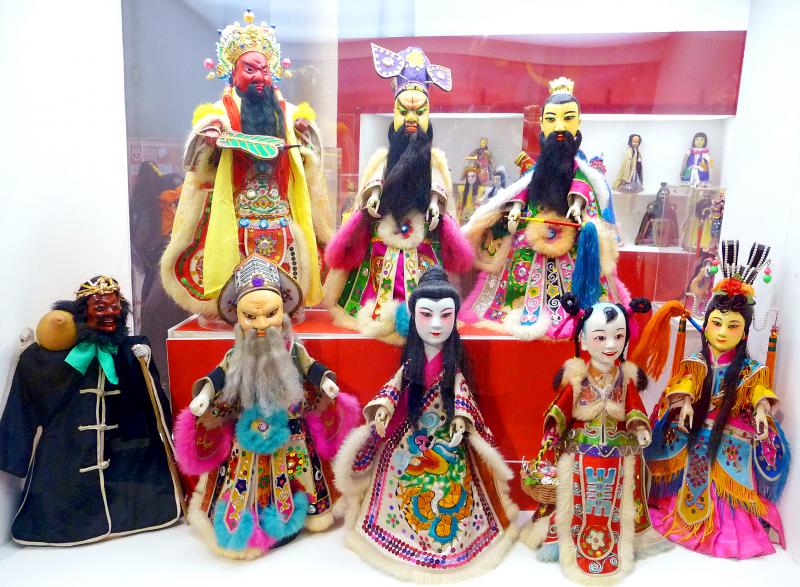
Photo: Steven Crook
Another location in Yilan often hosting Taiwanese opera performances is the National Center for Traditional Arts (www.ncfta.gov.tw) in Wuchieh (五結) Township.
Directions & Opening Hours
Taiwan Theater Museum is at 101 Fusing Road Sec 2 (復興路二段101號). Walking here from the train or bus stations takes 20 to 25 minutes. The museum is open 9am to midday and 1pm to 5pm from Wednesday to Sunday.

Photo: Steven Crook
MUSEUM OF TRADITIONAL THEATER
Even if you have no interest in performing arts, when passing through Chaojhou you should take a look at the charming redbrick-and-concrete building that houses the Museum of Traditional Theater (屏東戲曲故事館), also known as the Taiwanese Opera & Puppet Museum in Pingtung County.
Built in 1916 by the Japanese colonial authorities, it served as a government bureau and then a telecommunications office. For several years until Typhoon Morakot ravaged southern Taiwan in 2009, it was a post office.
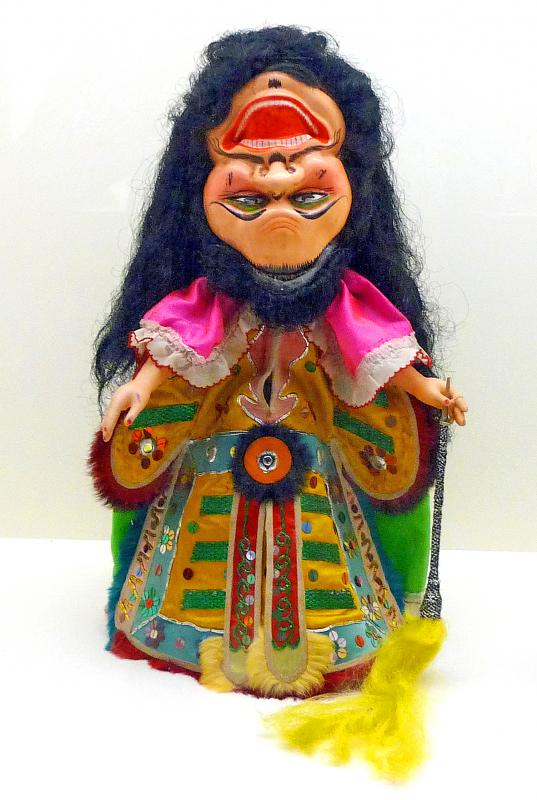
Photo: Steven Crook
While tidying up after the disaster, the beams holding up the tiled roof were found to be riddled with woodworm. A full renovation was ordered, and it was decided to turn the building into a museum celebrating opera and puppetry. It has two smallish galleries, so not much time is needed to see everything inside.
Chaojhou’s connection to the world of Taiwanese opera is through Ming Hwa Yuan Taiwanese Opera Company (明華園), the country’s leading performance group. Founded by a Pingtung native in 1929, the troupe based itself in the town between the early 1960s and its rise to national fame in the 1980s.
Rather than display memorabilia, the museum uses puppets to profile the five character categories in Taiwanese opera (Beijing opera, by contrast, has four). Unfortunately, there’s no English alongside any of the Chinese texts, and the photocopied English-language introduction I was given on arrival wasn’t especially useful.

Photo: Steven Crook
The museum has fewer budaixi puppets than its counterpart in Yilan, but it’s a selection to be savored. I was especially intrigued by a gender-bending brute. Bearded, yet with feminine hands, he didn’t look happy — but neither would I, if my head was on upside-down like his.
Other eye-catching puppets include: a female convict in a cangue; a Western-looking gentleman, said to have been inspired by the Spanish priest who established a church in the nearby town of Wanjin (萬金); and various devils and deities. I now totally understand why some people collect these works of art.
Directions & Opening Hours
The museum, which is open from 9am to 5pm from Tuesday to Sunday, is 1km east of Chaojhou Railway Station at 58 Jianji Road (建基路58號). Parking nearby isn’t difficult.

Most heroes are remembered for the battles they fought. Taiwan’s Black Bat Squadron is remembered for flying into Chinese airspace 838 times between 1953 and 1967, and for the 148 men whose sacrifice bought the intelligence that kept Taiwan secure. Two-thirds of the squadron died carrying out missions most people wouldn’t learn about for another 40 years. The squadron lost 15 aircraft and 148 crew members over those 14 years, making it the deadliest unit in Taiwan’s military history by casualty rate. They flew at night, often at low altitudes, straight into some of the most heavily defended airspace in Asia.

Many people in Taiwan first learned about universal basic income (UBI) — the idea that the government should provide regular, no-strings-attached payments to each citizen — in 2019. While seeking the Democratic nomination for the 2020 US presidential election, Andrew Yang, a politician of Taiwanese descent, said that, if elected, he’d institute a UBI of US$1,000 per month to “get the economic boot off of people’s throats, allowing them to lift their heads up, breathe, and get excited for the future.” His campaign petered out, but the concept of UBI hasn’t gone away. Throughout the industrialized world, there are fears that

Like much in the world today, theater has experienced major disruptions over the six years since COVID-19. The pandemic, the war in Ukraine and social media have created a new normal of geopolitical and information uncertainty, and the performing arts are not immune to these effects. “Ten years ago people wanted to come to the theater to engage with important issues, but now the Internet allows them to engage with those issues powerfully and immediately,” said Faith Tan, programming director of the Esplanade in Singapore, speaking last week in Japan. “One reaction to unpredictability has been a renewed emphasis on

Taiwan’s democracy is at risk. Be very alarmed. This is not a drill. The current constitutional crisis progressed slowly, then suddenly. Political tensions, partisan hostility and emotions are all running high right when cool heads and calm negotiation are most needed. Oxford defines brinkmanship as: “The art or practice of pursuing a dangerous policy to the limits of safety before stopping, especially in politics.” It says the term comes from a quote from a 1956 Cold War interview with then-American Secretary of State John Foster Dulles, when he said: ‘The ability to get to the verge without getting into the war is